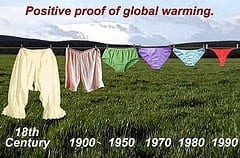YOU don’t have to be a climate scientist these days to know that the climate has problems. You just have to step outside.
The United States is now enduring its warmest year on record, and the 13 warmest years for the entire planet have all occurred since 1998, according to data that stretches back to 1880. No one day’s weather can be tied to global warming, of course, but more than a decade’s worth of changing weather surely can be, scientists say. Meanwhile, the country often seems to be moving further away from doing something about climate change, with the issue having all but fallen out of the national debate.
Behind the scenes, however, a somewhat different story is starting to emerge — one that offers reason for optimism to anyone worried about the planet. The world’s largest economies may now be in the process of creating a climate-change response that does not depend on the politically painful process of raising the price of dirty energy. The response is not guaranteed to work, given the scale of the problem. But the early successes have been notable.
Over the last several years, the governments of the United States, Europe and China have spent hundreds of billions of dollars on clean-energy research and deployment. And despite some high-profile flops, like ethanol and Solyndra, the investments seem to be succeeding more than they are failing.
The price of solar and wind power have both fallen sharply in the last few years. This country’s largest wind farm, sprawling across eastern Oregon, is scheduled to open next month. Already, the world uses vastly more alternative energy than experts predicted only a decade ago.
Even natural gas, a hotly debated topic among climate experts, helps make the point. Thanks in part to earlier government investments, energy companies have been able to extract much more natural gas than once seemed possible. The use of natural gas to generate electricity — far from perfectly clean but less carbon-intensive than coal use — has jumped 25 percent since 2008, while prices have fallen more than 80 percent. Natural gas now generates as much electricity as coal in the United States, which would have been unthinkable not long ago.
The successes make it possible at least to fathom a transition to clean energy that does not involve putting a price on carbon — either through a carbon tax or a cap-and-trade program that requires licenses for emissions. It was exactly such a program, supported by both Barack Obama and John McCain in the 2008 campaign, that died in Congress in 2010 and is now opposed by almost all Congressional Republicans and some coal-state and oil-state Democrats.
To describe the two approaches is to underline their political differences. A cap-and-trade program sets out to make the energy we use more expensive. An investment program aims to make alternative energy less expensive.
Most scientists and economists, to be sure, think the best chance for success involves both strategies: if dirty energy remains as cheap as it is today, clean energy will have a much longer road to travel. And even an investment-only strategy is not guaranteed to continue. The clean-energy spending in Mr. Obama’s 2009 stimulus package has largely expired, while several older programs are scheduled to lapse as early as Dec. 31. In the current political and fiscal atmosphere, their renewal is far from assured.
via New York Times – David Leonhardt
The Latest Streaming News: Hope for the Planet updated minute-by-minute








